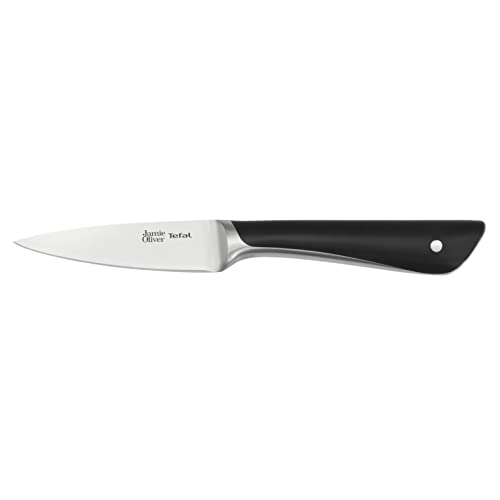Washing the knife immediately after use
One of the most important steps in cleaning a paring knife is to wash it immediately after use. This is because food particles and residue can quickly dry and stick to the knife, making it harder to clean later. To wash the knife, simply use warm soapy water and a sponge or dishcloth. Be sure to carefully clean both sides of the blade and the handle, paying attention to any crevices or areas where food may have become stuck. Rinse the knife thoroughly to remove any soap residue, and then dry it with a clean towel.
Using a brush or toothbrush
In some cases, simply washing the knife with a sponge or dishcloth may not be enough to remove all food particles. For stubborn residue, it can be helpful to use a brush or toothbrush. The bristles of the brush can help to dislodge any stuck-on food, making it easier to clean the knife. Use the brush or toothbrush to scrub the blade and handle, being sure to reach all areas. Rinse the knife thoroughly after scrubbing to remove any loosened particles, and then dry it with a clean towel.
Avoiding abrasive cleaners or scouring pads
When cleaning a paring knife, it is important to avoid using abrasive cleaners or scouring pads. These can scratch the blade and damage its sharp edge. Instead, opt for gentle cleaning methods that will not cause any harm to the knife. If you encounter stubborn stains or residue that cannot be removed with gentle cleaning methods, you may want to consider using a non-abrasive cleaner specifically designed for kitchen knives. These cleaners are formulated to be safe for use on blades and will not cause any damage.
Storing the knife properly
Proper storage is also an important aspect of keeping a paring knife clean. After washing and drying the knife, it is best to store it in a knife block or on a knife magnet. This will prevent the knife from coming into contact with other utensils or surfaces that may transfer bacteria or cause damage to the blade. Avoid storing the knife in a drawer where it may become dull or damaged by other utensils. Keeping the knife in a designated space will help to maintain its cleanliness and sharpness.
Sharpening the knife regularly
A sharp knife is not only more efficient to use, but it can also be easier to clean. When a knife is dull, it may require more pressure to effectively cut through food, increasing the chances of food particles becoming stuck to the blade. To avoid this, it is recommended to regularly sharpen the paring knife. This can be done using a sharpening stone or a knife sharpener. Following the manufacturer’s instructions, carefully sharpen the blade to ensure it maintains its sharpness. A sharp knife will not only make food preparation easier but will also help to prevent the knife from becoming dirty or contaminated.






